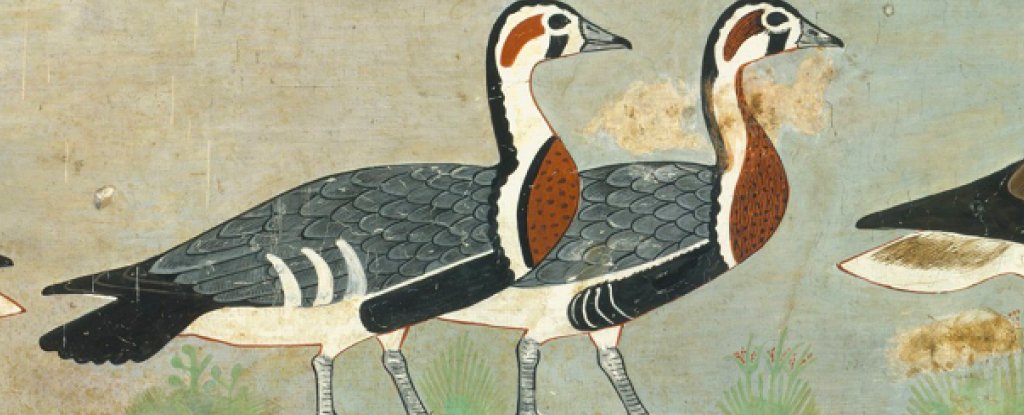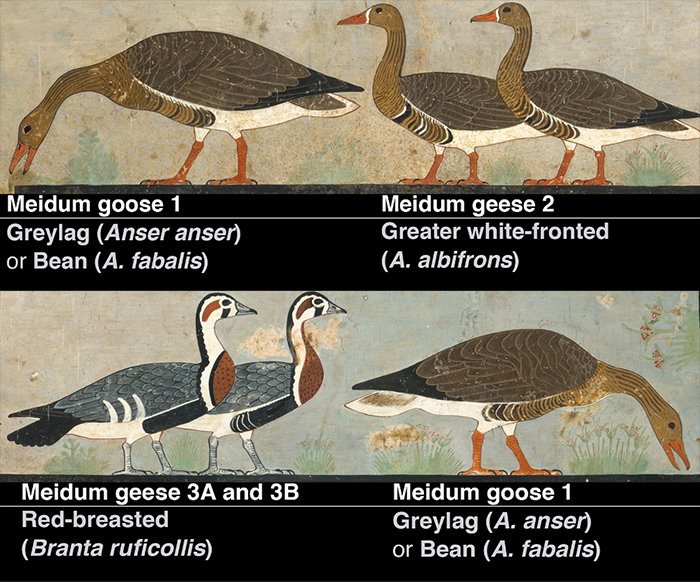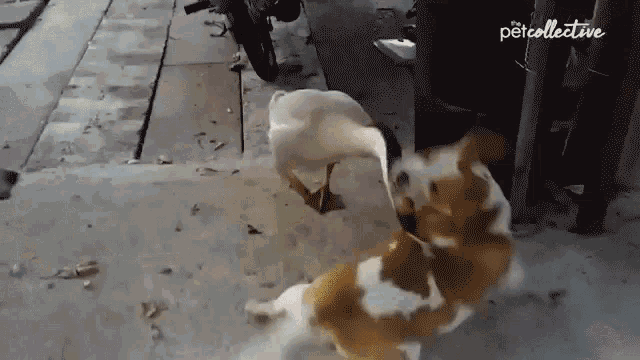
Posted on 02/24/2021 5:51:39 AM PST by Red Badger

Meidum Geese (via Romilio, J of Arch Sci: Reports, 2021)
============================================================
Artwork that had adorned the walls of an Egyptian prince's tomb for more than four millennia has been found to contain images of a bird completely unknown to modern science - until now.
Although archaeologists have been eyeing the representations of local waterfowl since the fresco's discovery at the dig site of Meidum in 1871, it's taken an evolutionary biologist's clever taxonomic sleuthing to see the birds for what they really were.
Last year Anthony Romilio from the University of Queensland in Australia took a closer look at the six birds represented in a famous piece known as the Meidum Geese, a 4,600-year-old painting historians describe as "one of the great masterpieces of the Egyptian animal genre".
In spite of centuries of scrutiny, and the fact it holds a place in history as the oldest recording of birds with enough detail to nail down a species, the precise identity of most of those species has never been agreed upon.
Now it appears it could be because one of them couldn't be found in any ornithology books.
"Apparently no-one realised it depicted an unknown species," says Romilio.
"Artistic licence could account for the differences with modern geese, but artworks from this site have extremely realistic depictions of other birds and mammals."
Those mammals include representations of dogs, cattle, leopards, and a white antelope known as the addax, all preserved in stunning detail inside the burial chambers of the fourth dynasty prince Nefermaat I and his wife, Itet.
While much of the artwork had been plundered within decades of its discovery, the fresco featuring the geese was relocated by the Italian Egyptologist Luigi Vassalli, ensuring its conservation.
Now in the Museum of Egyptian Antiquities in Cairo, the geese remain the subject of an intense debate.
Most agree that two of the three left-facing birds are greater white-fronted geese (Anser albifrons), a medium-sized goose still found widely across the Northern Hemisphere.
But the identity of the painting's first and last bird is somewhat in doubt, with zoologists unable to decide whether it's an example of a greylag goose (A. anser) – the ancestor of most domestic geese – or a bean goose (A. fabalis).
Then there are the two, slightly smaller grey-and-red birds facing right. They bare a resemblance to red-breasted geese (Branta ruficollis), a rare goose found across western Europe, but opinions vary on whether it's a closed case, or the match is passing at best.
Representations and scientific names of the six Meidum geese (Romilio, J of Arch Sci: Reports, 2021)
Without any remains of this species having been uncovered in any ancient Egyptian dig site, the classification is on shaky ground.
Rather than simply wing it, however, Romilio used a more objective framework to compare thirteen visible characteristics on each animal according to a scale of dissimilarity referred to as 'Tobias criteria'.
"This is a highly effective method in identifying species – using quantitative measurements of key bird features – and greatly strengthens the value of the information to zoological and ecological science," says Romilio.
Going by his assessment, the pair of contentious birds are too different to red-breasted geese to be assumed to be a near-enough match, even taking into account the possibility of artistic interpretation.
As to what bird the paintings might represent, their enlarged flank plumes are distinctive enough to make them stand out as relatively unique, indicating it's more than likely we just don't see their kind any more.
"From a zoological perspective, the Egyptian artwork is the only documentation of this distinctively patterned goose, which appears now to be globally extinct," says Romilio.
Just what happened to this particular goose is another mystery left to solve.
Finding clues on extinct and living animals in ancient artwork, including cave paintings tens of thousands of years old, is one way biologists can track changes in distribution and ranges of wildlife, or for ecologists to monitor changes in climate.
Thousands of years in the past, the northern parts of Africa were far greener than they are today, with signs that even the inhospitable sandscape of the Sahara was once a farmer's paradise.
Secrets to Egypt's dynamic history could still be hiding amid its diverse collection of artwork, just waiting for the right pair of eyes to look closely enough.
This research was published in the Journal of Archaeological Science: Reports.

PinGGG!.......................

Or the artist made it up.
You should see some of the cat pictures from the Middle Ages.
Since these are pics from a pharaoh’s tomb, I doubt very seriously that the artists was given free reign to paint his mind.....................
Question, if there is more than one goose, do you say gooses or goosesess?
But did they taste good?
You say GEESE. 😄
Must have been tasty.
of course they tasted good...
as is the reason why they be gone...
Duck ... Duck ...
I love waterfowl and love this painting. He or she captured the fissures on the geese necks perfectly. Waterfowl undergo many plumage changes during growth and afterward during moulting. Seems like real geese and not fabrications.
If the plural of mouse is mice, the plural of goose should be gice...

Did they go extinct b/c the Egyptians released too many hydrocarbons into the air causing Climate Change?
Inquiring minds would like to know so we don’t make the same mistake.
Government needs to look into this.
Quack.
Honk.
Errhh - is this expert going to tell us what sounds they made?/s
Same for louse. If there is a group of them gathered together, like, for example, in the Democrat-led House, they should be called lice.
Politics - poly meaning many, tics meaning blood sucking parasites...

Disclaimer: Opinions posted on Free Republic are those of the individual posters and do not necessarily represent the opinion of Free Republic or its management. All materials posted herein are protected by copyright law and the exemption for fair use of copyrighted works.